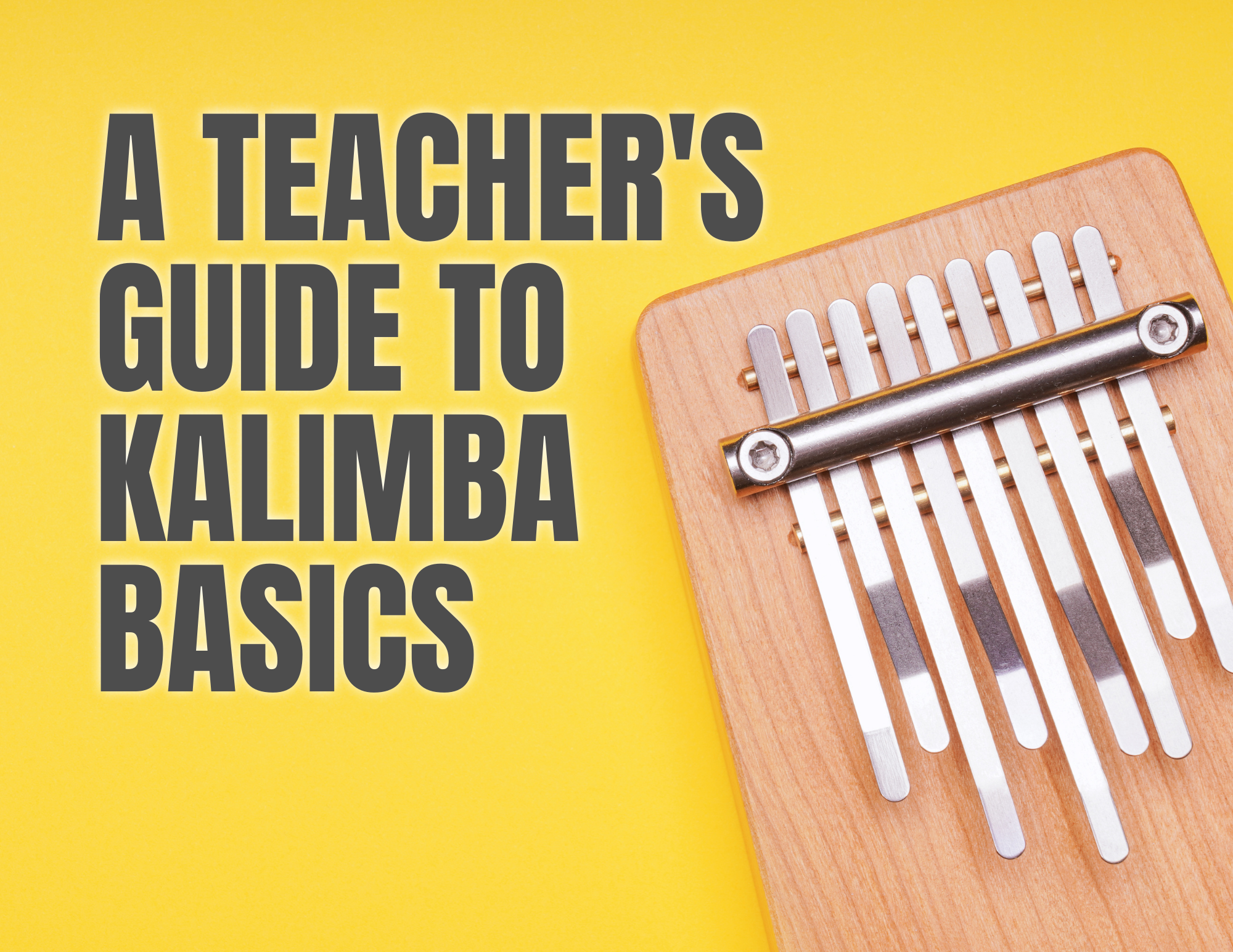
A TEACHERS GUIDE TO KALIMBA BASICS
The kalimba emerges as a unique and charming instrument, offering teachers an accessible and melodious way to introduce their students to the joy of making music. This comprehensive guide is designed to equip educators with the essential knowledge and techniques needed to integrate the kalimba into their classrooms, fostering a harmonious and engaging learning experience for all.

Selecting the Right Kalimba
Choosing the appropriate kalimba is crucial for a positive learning experience. Teachers should consider factors like size, materials, and the number of tines:
- Size: Select a kalimba size that suits the age and hand size of the students, ensuring comfortable playability.
- Materials: Opt for kalimbas made from durable materials, such as wood or metal, ensuring longevity and quality of sound.
- Number of Tines: Different kalimbas have varying numbers of tines; choose one with an appropriate range for beginners, balancing simplicity with musical potential.
Kalimba Tuning Basics
Tuning the kalimba is a straightforward process that involves adjusting the length of the tines to achieve accurate pitch. Teachers can guide their students through this process, fostering an appreciation for the musical sound. Using a digital tuner can assist in achieving precise tuning and creating a harmonious playing experience.
Understanding the basics of kalimba tuning is essential to producing pleasing melodies. A well-tuned kalimba ensures that each note resonates in harmony, creating an enjoyable musical experience for both the player and the audience.
The guide acknowledges that finding balance isn’t an unreachable goal but an ongoing process. It encourages teachers to assess their priorities, delegate when needed, and understand that a well-rested and balanced teacher is better prepared for the challenges of the classroom.

Basic Kalimba Techniques
Introducing students to fundamental kalimba techniques ensures a solid foundation for their musical journey:
- Thumb Technique: Teach students to use the pads of their thumbs to pluck the tines gently, producing a warm and mellow sound.
- Single Note Melodies: Begin with simple melodies to help students grasp the basics. Encourage them to play single notes, gradually progressing to more complex tunes.
- Chordal Harmony: Explore the harmonic potential of the kalimba by introducing students to playing chords. This adds depth and richness to their musical expressions.
Mastering these basic techniques opens the door to a world of musical creativity. Students can express themselves through melodic compositions and explore the full range of the kalimba’s enchanting tones.
Integrating Kalimba in the Classroom: Creative Activities
The kalimba offers a versatile and creative addition to classroom activities, enhancing the overall learning experience:
- Accompanying Poetry: Elevate poetry readings by having students play the kalimba, adding a melodic dimension to the spoken word.
- Storytelling Soundtrack: Create a musical backdrop for storytelling sessions, allowing students to contribute to the narrative with the kalimba’s enchanting tones.
- Student Compositions: Encourage students to compose their melodies on the kalimba, fostering creativity and providing an outlet for self-expression.
By integrating the kalimba into various classroom activities, teachers can create a dynamic and engaging learning environment. The instrument becomes a tool for collaborative creativity, allowing students to explore the intersection of music and other academic subjects.

The Therapeutic Touch: Kalimba for Relaxation and Focus
In addition to being a musical instrument, the kalimba can serve as a tool for relaxation and focus in the classroom:
- Mindful Melodies: Guide students in playing calming kalimba tunes as a relaxation exercise, promoting mindfulness and stress relief.
- Focus Enhancement: Utilize the kalimba to enhance concentration during study sessions, creating a harmonious environment conducive to learning.
Encouraging students to use the kalimba for relaxation and focus introduces them to the therapeutic aspects of music. The instrument becomes a valuable tool for cultivating mindfulness and concentration in the academic setting.
Striking the Right Note in Education
As teachers embark on the journey of integrating the kalimba into their classrooms, they become orchestrators of a unique and enchanting learning experience. The kalimba’s simple yet captivating nature unlocks doors to creativity and musical exploration for students. With each gentle pluck of the tines, teachers and students alike create a harmonious symphony that resonates through the halls of education, leaving an indelible mark on the hearts and minds of all involved. In the world of kalimba basics, teachers find not just a musical instrument but a key to unlocking the joy of learning in every student.

